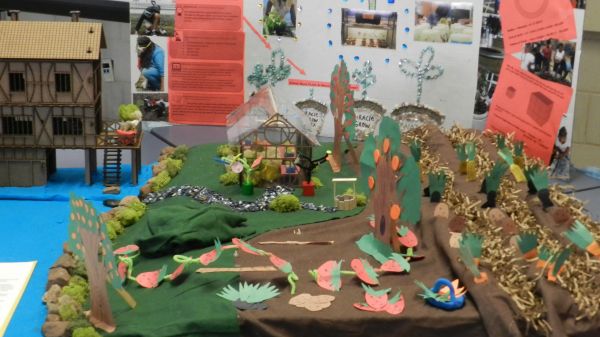Teaching Environmental Education in the Classroom

This blog was written by Nichlas Emmons for Huffington Post on April 19, 2016. We are sharing it here because we feel it is relevant and meaningful to the eePRO community. You can find the original blog post at the following link: http://www.huffingtonpost.com/nichlas-emmons/teaching-environmental-ed_b...
Teaching Environmental Education in the Classroom
By Nichlas Emmons
Nonformal education provides opportunities for students to learn outside of the classroom environment. There are some occasions when nonformal learning may occur during the school day, such as when programs or lessons are not standardized, accredited, or part of the larger school curriculum. But, mostly, nonformal education is something that happens away from the classroom. We often see nonformal learning experiences in natural and physical science related fields, including environmental science and studies. These are important programs, to be sure, but today I also make the case for teaching environmental education in the classroom.
Because we operate under a standards-heavy, high-risk assessment system, it is important to consider other ways to teach about the environment. Finding opportunities within the classroom may sometimes be difficult; teachers shoulder a great deal of responsibility and that responsibility may produce a lot of stress at different points throughout the academic school year. The purpose of this essay, though, is to provide some ideas for infusing environmental education into the classroom. If you are a teacher who does this already, then perhaps some of these ideas will further enhance your teaching practice. Feel free to share your ideas, too!
One idea is the creation of an environmental trunk, or kit, filled with various items relevant to your teaching style, subject(s), and goals. These trunks/kits may include: light bulbs, for conversations about energy conservation and the science behind it; seeds from well-known local plants, to discuss how plants grow and their importance to human and non-human animals; and a sample of bituminous coal, to explain the importance of coal to United States development and to demonstrate the dirtiness of the actual coal itself. An environmental truck/kit is useful because it brings hands-on activities into the classroom and provides students with memorable learning experiences.
Another idea is the use of multimedia. While technology sometimes gets a bad rap from environmentalists, and with sometimes good reasoning, it also can be an excellent tool to teach about the environment. For example, there are many awesome mobile apps that may be useful to teachers who have the opportunity to use tablets in the classroom. EcoChallenge invites you to reduce your waste and includes various tidbits of information that make your reductions feel more meaningful. Apps like Project Noah and iNaturalist encourages you to record your experiences with wildlife, all the while learning about the very species you are recording. Using climate data, NASA’s Earth-Now presents a 3D visualization of the earth which illuminates further the great importance of addressing environmental issues.
To better prepare teachers to enhance their own teaching practice, professional development programs tailored to meet school needs and interests also should be pursued. This is especially important when introducing new pedagogy into the classroom, including the two ideas described above. Professional development sessions that require intensive workshop time are essential to the success of the training program. These workshops should allows teachers to work together in relevant groups and consult with those experts providing the professional development. Based on my own experience in providing similar teaching enhancement trainings, teachers tend to be interested in how new content and curriculum can be standardized and whether they have access to content experts should they have questions. For additional information into this type of professional development for environmental education feel free to look into the programs offered through a Minnesota nonprofit, Green, Ink.
The suggestions found in this essay are limiting in some ways because not all schools and school districts have the resources to build environmental trunks/kits, purchase enough or any tablets, or pay for quality professional development programming. This highlights a need to be more creative in how we address teaching environmental education.


